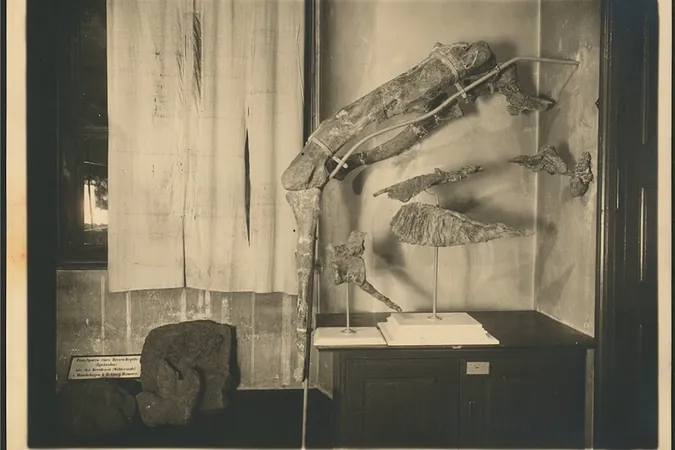
Scientists Unearth an Astonishing New Predator Dinosaur in Historic Discovery
2025-01-20
Author: Sophie
In an exciting breakthrough, paleontologists have identified a remarkable species of dinosaur believed to have existed approximately 95 million years ago in what is now Africa. Dubbed the Tameryraptor markgrafi, this colossal dinosaur is estimated to have reached lengths of around 10 meters, making it one of the largest terrestrial carnivores known to science.
The fossil was excavated from the Bahariya Oasis in Egypt and had been carefully stored among other significant Egyptian dinosaur fossils at the Bavarian State Collection for Paleontology and Geology in Munich, Germany. The discovery of Tameryraptor markgrafi was made possible due to a collection of archival photographs taken before World War II which crucially depicted the skeleton prior to its destruction during the war.
Historically, the fossil had been classified under the genus Carcharodontosaurus, meaning "shark-toothed lizard." However, the havoc wreaked by the bombings of World War II led to the loss of many specimens, leaving only Dr. Ernst Stromer's notes, some illustrations, and a handful of photographs. The new findings from these archived images reveal distinct differences between Tameryraptor and other known Carcharodontosaurus species discovered in Morocco.
“We were taken aback by what we saw in these historical images. The Egyptian dinosaur depicted there significantly diverges from the other Carcharodontosaurus specimens," explained Maximilian Kellermann, the lead author of the study. "This resulted in the recognition of a previously unknown predatory dinosaur, now formally named Tameryraptor markgrafi.”
The name "Tameryraptor" is derived from the ancient nomenclature for Egypt, while "markgrafi" pays tribute to the fossil collector Richard Markgraf, who initially excavated the dinosaur's remains. Notable characteristics of this predator include its symmetrical teeth and a prominent nasal horn, indications of its formidable evolutionary adaptations.
This groundbreaking discovery not only emphasizes the diverse range of prehistoric life that once inhabited the region but also highlights the potential benefits of revisiting older archives in paleontological research. Co-author Oliver Rauhut commented, “Our work underscores that digging into archives can be just as fruitful as excavating new sites for fossils. However, to fully understand the Cretaceous predatory dinosaur fauna from the Bahariya Oasis, further recovery of fossils from this site is essential.”
In an exciting parallel find, researchers have also recently uncovered extensive dinosaur footprints revealing what they believe to be an ancient 'dinosaur highway', further enriching our understanding of the ecosystems these magnificent creatures traversed.
As this story unfolds, paleontologists remind us that there is still much to learn and uncover about the prehistoric giants that once roamed our planet, fueling our imagination and expanding our knowledge of Earth’s biological history. Stay tuned for more astounding discoveries from the world of paleontology!









 Brasil (PT)
Brasil (PT)
 Canada (EN)
Canada (EN)
 Chile (ES)
Chile (ES)
 Česko (CS)
Česko (CS)
 대한민국 (KO)
대한민국 (KO)
 España (ES)
España (ES)
 France (FR)
France (FR)
 Hong Kong (EN)
Hong Kong (EN)
 Italia (IT)
Italia (IT)
 日本 (JA)
日本 (JA)
 Magyarország (HU)
Magyarország (HU)
 Norge (NO)
Norge (NO)
 Polska (PL)
Polska (PL)
 Schweiz (DE)
Schweiz (DE)
 Singapore (EN)
Singapore (EN)
 Sverige (SV)
Sverige (SV)
 Suomi (FI)
Suomi (FI)
 Türkiye (TR)
Türkiye (TR)
 الإمارات العربية المتحدة (AR)
الإمارات العربية المتحدة (AR)